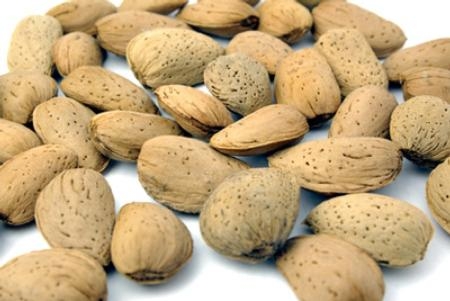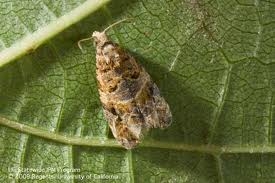Posts Tagged: Walt Bentley
California dreamin'
The almond industry's dream of hitting the two billion-pound mark has come true, according to an article by Cary Blake in Western Farm Press.
“We once believed achieving a 2-billion-pound California almond crop was a distant dream but now it’s a reality,” said Bob Curtis of the Almond Board of California at the 2011 Almond Industry Conference.
The conference included presentations by John Edstrom, UC Cooperative Extension emeritus farm advisor, Colusa County; Mario Viveros, UCCE emeritus farm advisor, Kern County; and Walt Bentley, UC IPM entomologist. Combined, these UCCE specialists have nearly 100 years of experience in the California almond industry
Edstrom tied the monumental yield increases in recent decades to precision irrigation, high-density tree planting, minimum and machine pruning techniques, and soil modification and amendments.

Improved cultural practices, better varieties and integrated pest management have contributed to increased almond yields.
UCCE leads the charge against grapevine pest
UC Cooperative Extension farm advisors Monica Cooper and Lucia Varela are taking the lead in helping Napa County growers manage their vineyards infested with European grapevine moth, according to an article in Grower magazine.The advisors are monitoring the pest's lifecycle, and when it's the optimum time for pesticide treatment, they send e-mail alerts to growers.
Growers then have a 10-day window to treat the vineyard, said the article, written by editor Vicky Boyd. The pesticides Intrepid and Altacor are registered for conventional production; Entrust and Bacillus thuringiensis are available for organic farmers.
A second European grapevine moth control effort in Napa County involves distribution of twist-ties on vines to dispense pheromones that disrupt the pests' mating.
In the San Joaquin Valley, where only a few moths have been trapped, agricultural officials are relying on insecticides alone. UC Integrated Pest Management entomologist Walt Bentley told the reporter that clouds of pheromone would shut down detection traps.
“I’m confident we can eliminate it here in the Central Valley,” Bentley was quoted.
For more information, Boyd directs readers to the UC Integrated Pest Management web page on European grapevine moth.

European grapevine moth.
UC scientists see ravages of new pest firsthand
A group of UC scientists traveled to Chile recently to see firsthand vineyard damage caused by the European grapevine moth, according to an article in the Fresno Bee. The moth has been detected in California's Napa County, and is being actively tracked in the valley to determine whether the infestation has spread.
European grapevine moth was discovered three years ago in Chile. Because the pest develops from larvae to moth at a crucial time in the grape's growth cycle, its effects can be devastating.
"They have lost whole vineyards in Chile; not one grape was picked," UC entomologist Walt Bentley was quoted in the Bee. "It actually lays its eggs on the berry, and as the berries bloom little flower clusters, the larvae begins feeding on that. It is a voracious eater."
Napa County is world-renowned for its fine wines, but it may be the San Joaquin Valley that has the larger stake in the effort to keep the European grapevine moth at bay. Valley farmers produce nearly all of California's table and raisin grapes and, with 1.3 million tons of grapes for crush in 2009, lead the state's production of grapes for wine and concentrate.
A major European grapevine moth infestation could cost the industry millions of dollars in control efforts and lost sales to countries that block imports from areas with the pest, wrote Bee reporter Robert Rodriguez.
More information on the European grapevine moth is available on the UC Integrated Pest Management Web site.

European grapevine moth

